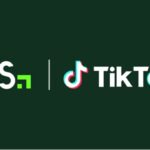In today’s world, the ultimate goal of all the brands in this world is to turn their paid customers into advocates. These people may not necessarily be the regular buyers but believers or supporters who love the brand that makes them to positively recommend it to their peers or defend the brand whenever it is under attack.
In my previous article, I’ve explained how connectivity in this digital world has tremendously changed the path of customer’s experience especially on how the decision to purchase a product or service. I also discussed the new customer path known as 5A’s that refers to the element of aware, appeal, ask, act and advocate. I shared about each of their complexities and advantages too. So you may want to check out the article so that you will be able to understand the following insights.
In today’s world, the ultimate goal of all the brands in this world is to turn their paid customers into advocates. These people may not necessarily be the regular buyers but believers or supporters who love the brand that makes them to positively recommend it to their peers or defend the brand whenever it is under attack. A low conversion rate from act to advocate is a sign of low affinity. This means that customers who have purchased the brand are not satisfied enough to recommend it to others. The source of dissatisfaction of the customers could be due to poor post-purchase experience, bad services or poor product or services quality.
After a product is sold, that moment is critical for the brand to start building advocacy. They must make sure that their post-purchase services to exceed or at least match the customer’s expectations. Only then customers would develop a sense of affinity and become loyal advocates. Brands must design their post-purchase experience in such a way that it covers more touchpoints and soft spots. One way is to develop a customer engagement programs. The importance of customer engagement programs has become more vital as brands are trying to humanize by increasing their interaction with their customers as friends. Such interactions can be done by using various customer service interfaces, social media platforms and gamification. For instance, Starbucks has a strong customer engagement through its Starbucks Reward program. This program allows customers to collect points for every transaction to enjoy different benefits and rewards. This way customers feel motivated to increase their transactions to collect more points and be entitled to rewards.
After implementing customer engagement programs and generally improving the post-purchase experience, the question to be answered now is this. As a brand, how are we going to measure whether such actions and programs are actually going to increase the customer’s advocacy? The answer lies in the BAR or Brand Advocacy Ratio. It is a marketing productivity metric which helps marketers to measure how well companies could convert the brand awareness into brand advocacy. This metric basically refers to a number of people in the market who spontaneously recommend a brand to others. This is how it is calculated:
Brand Advocacy Ratio (BAR) = Spontaneous Advocacy ÷ Spontaneous Awareness
The 5 A’s framework allows us to identify several industry patterns and learn how to succeed in our industry by comparing BAR statics.
There are four major archetypes or patterns that exist across industries: Door Knob, Goldfish, Trumpet and Funnel.
In Door Knob pattern, customers have prior expectations and preference and have a low affinity towards brands. Here, aggressive branding and communication are normal and competition is intense. An example industry of the Door Knob pattern is the Consumer Packaged Goods (CPG).
In Goldfish pattern, the evaluation before purchasing (Ask phase) is very lengthy and there are multiple stakeholders with different interests involved. This industry is highly commoditized and brands have similar positioning with one another. Such pattern can mostly be found in business to business (B2B) contexts.
Trumpet pattern can mostly be found in lifestyle categories such as luxury watches, cars and designer bags. Customers are highly involved in the purchase decisions and have trust in the brand quality. In this pattern, the number of advocates could be more than the number of actual buyers. Brands in this pattern normally have a reputation in for their quality and relying on the word of mouth is never a problem.
The last pattern is called Funnel. Here, purchases are mostly planned and customers trust real experience and not just claims. Brands in Funnel archetype can easily be compared as they focus on strong customer experience. In this pattern, customers will go through all the customer path’s phases (5 A’s) and therefore the overall customer experience matters. Service industry and consumer durables are mostly categorized in this pattern.
If your brand is categorized under Door Knob pattern, you must increase the affinity level (Advocate phase) of your customers by conducting post-purchase engagement programs. If Goldfish is the pattern which your brand belongs to, you must optimize the curiosity of your customer (Ask phase), increase their commitment (Act phase) as well as affinity level. Brands in Trumpet pattern should increase the commitment level perhaps by making their products more affordable and available for the customers. If your brand is placed in Funnel pattern, you should increase the commitment and affinity level. In other word having a balance between sale and after-sale services would be a challenge.
Which one of these industry patterns your brand belongs to? And what are the necessary actions you plan to undertake in order to be ahead of your competitors before it is too late?

















